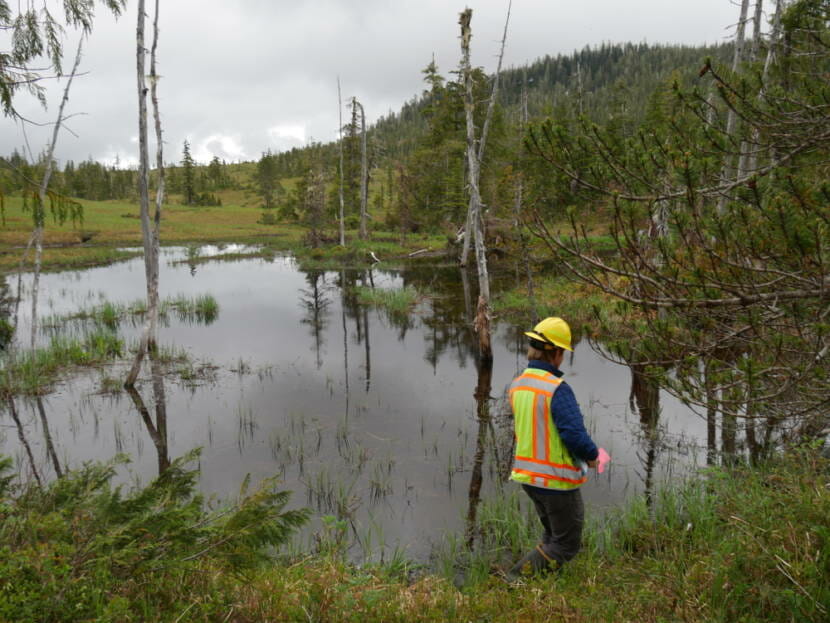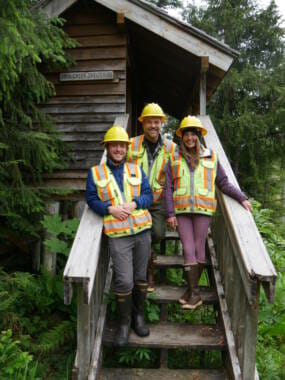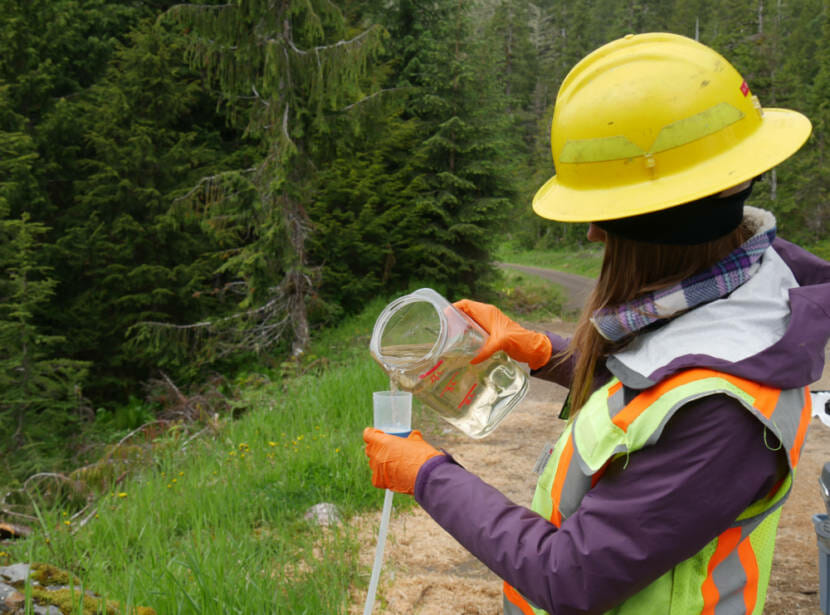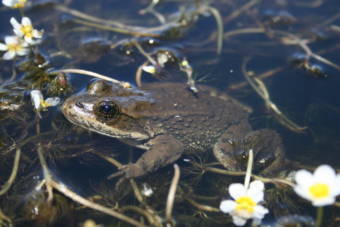
A deadly fungus could threaten several amphibian species in the Tongass National Forest. On Mitkof Island, the U.S. Forest Service is using a mix of old and new methods to find it.
About 3 miles inland, the Twin Creek Ski Shelter overlooks a pond in the middle of the muskeg. Just a few weeks ago, this part of the island was still covered in snow. Members of the Forest Service are here to look for frogs.
They scoop up buckets of water from different parts of the pond. Then, Marcee Meinhardt pours the water into a pump that carries it through a filter.
“This filter collects all of the environmental DNA,” Meinhardt said. “Then we’ll take a sanitary tweezer and collect the filter from inside here, put it into a sanitary bag, label it with where we are and how much water was sent through it, and then we’ll send that back to the lab.”

The filters look like round cotton pads. They’re sending about three dozen of them to a lab for DNA testing.
The results will tell them two things. First, whether there are amphibians at the sites. And second, whether pathogens like chytrid fungus are there, too.
Chytrid is a skin fungus. Frogs and salamanders absorb oxygen through their skin, and the fungus hampers their ability to do that. That reduces their energy level and often kills them.
Last year, the Tongass wildlife and fisheries program detected chytrid in Wrangell, Prince of Wales Island and Yakutat.
“It stops them from being able to reproduce or if they do, if they are able to reproduce, then usually that young won’t be able to reproduce,” Meinhardt said. “It kind of just kind of snips their genetic timeline in the bud.”
One out of every 16 amphibian species has gone extinct or become endangered because of the chytrid fungus, according to a 2019 study. Global trade is thought to have brought it to Alaska from other parts of the world.
There are three frog and three salamander species native to the Tongass. The Forest Service says they’re a vital part of the food chain. They eat a range of insects and other invertebrates. And they’re prey for many fish, birds and small mammals.
Eric Castro is the fish biologist at the Petersburg Ranger District leading the effort to test for chytrid on Mitkof Island. He says the agency has very little baseline information about the size and location of existing amphibian populations.
“If we don’t know how many exist, all we have is anecdotal evidence,” Castro said. “Folks say they used to see more frogs in this area back when they were young, but there’s no data. So right now, we’re collecting data so that we can actually see what the impacts are and then evaluate the future of the species.

To collect that data, Castro and his team have visited twelve different sites, two times each. While Castro and Meinhardt collect and filter water, Sam Wynsma is using a different tool: his eyes. At each site, a member of the team always looks around the old fashioned way.
“It’s essentially what you do when you’re 12: Go look at the edge of ponds and streams and flip over logs, looking for frogs and toads and newts,” Wynsma said.
Castro thinks he saw salamander eggs on an earlier site visit. Thanks to the DNA tests, he’ll soon know for sure.
“That’s the power of this environmental DNA,” he said. “These are elusive creatures and pathogens, being microscopic, even more so. With the environmental DNA, that really enables us to be able to see what we can’t actually.”
The Petersburg Ranger District will have to wait one to three months to get the test results back. But they’re already thinking about ways the public can help stop the spread of the fungus. One idea is setting up boot-washing stations at sites where chytrid is detected. Castro, Meinhardt and Wynsma clean their boots with a solution of bleach and water after visiting each site to avoid contaminating other parts of the forest.
Castro hopes the project brings more attention to the amphibians that often go unseen.
“They’re out of sight, out of mind,” he said. “You oftentimes consider fisheries resources first. And regardless of them not being the charismatic species that we see climb trees and howl at the moon, they’re part of the natural environment.”
A part of the environment that, hopefully, is here to stay.
